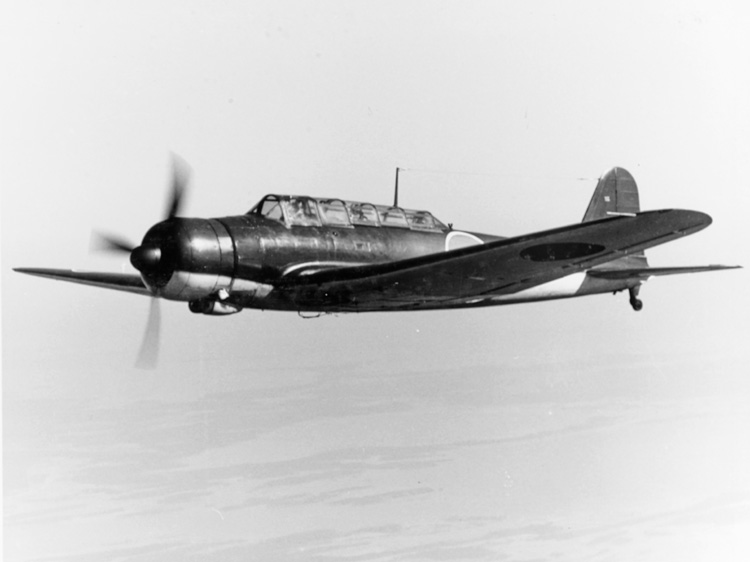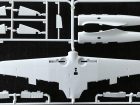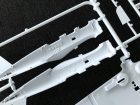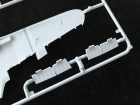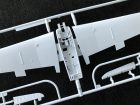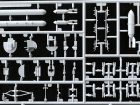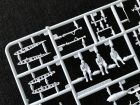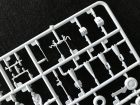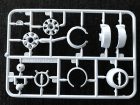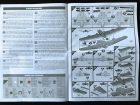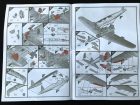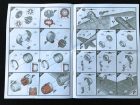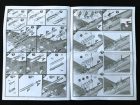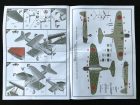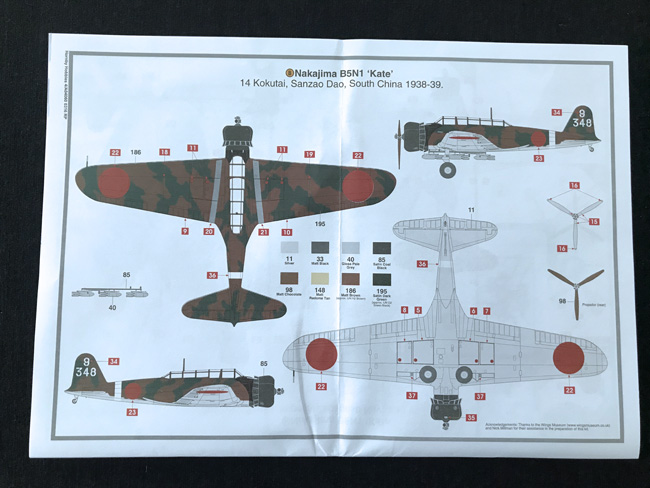
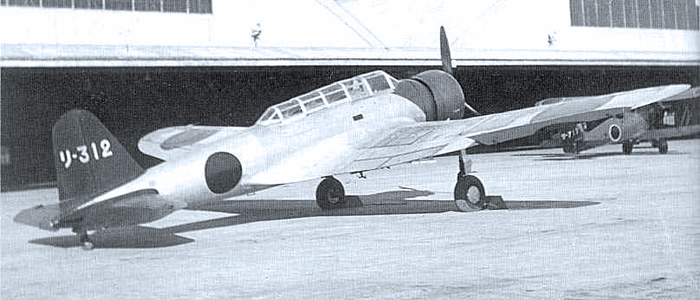
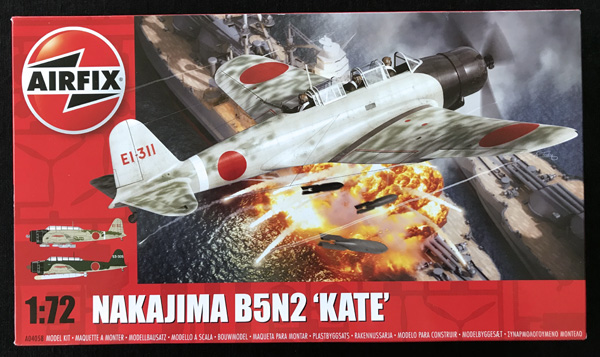
Kit Ref: A04058
Price around £18.99 GBP, $26.46 USD, €21.54 Euros, $32.93 AUS, $32.82 CAD
Review by Geoff Coughlin (January 2018)
Our thanks to Airfix for supplying our review sample. Get this kit now at Airfix.
The Airfix kit
Not one but two new-tool versions of this aircraft are now available from Airfix in 1:72 and you’ll find the other review in SMN shortly. You will be surprised at just how detailed and refined this kit is as soon as you open the box and spread out what’s there – really impressive!
The only discernible difference between the kits seems to be the differing engine/cowl flap arrangements and of course different decal options.
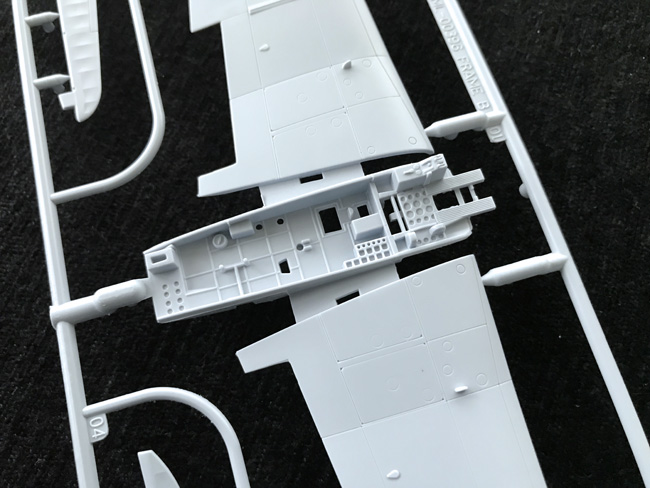
What do you get?
You can see the sprues as well as I can so take a good look at the images and I think you’ll be impressed. This aircraft is ‘busy’ in terms of cockpit details and is still straightforward as a build project it seems in 1:72 scale. There seems little to add except some belts for the three crew seats.
Let’s start with the plastic
The plastic is just like the manufacturer’s other recent releases – slightly soft yet well-tooled light blue-grey parts. Panel line detail is scribed and well done for the scale. No real excess flash is apparent, especially on many of the smaller, delicate parts, just some ejection pin marks in areas that are unlikely to be seen.
Parts breakdown is interesting and the main and very obvious inclusion is the lower cockpit area integrally moulded with the main upper wings – the whole thing coming as a one-piece section – incredible. You can see this section in the attached photos – what do you think?
Fuselage – general shape looks very authentic and the engine and cowls are separate additions with the main fuselage halves coming together and joining with that main upper wing/cockpit assembly. The one-piece lower wing assembly clicks in under all this.
I have cut the fuselage halves from their sprues and test-fitted them and they fit very well. There is some internal cockpit detail moulded onto the side walls and this, together with other instruments and that main floor section will make for a very detailed cockpit.
Main wings – as described above with one-piece upper and lower wing sections. The instructions show what you need to do for the wing fold option that’s included. Some nice wing fold inserts are included that have great detail.
Flaps/elevators – outer wing elevators are provided as separate items, so you can pose them as you like. A subtle fabric-effect is moulded into the elevators. The flaps are also separate and can be dropped which is great in this scale.
Rudder – The rudder is moulded separately so that you can add some interest by slightly offsetting it if required.
Cockpit – This is going to exceed expectations for many modellers; you get a representative seat for each of the three crew members and good cockpit instrument side console detail. You need to add a seat harness which is fine by me and usually better than poorly moulded belts often provided. A decal is provided for the main panels – ideal for 1:72 scale.
Undercarriage and bay – Nicely detailed undercarriage legs and the wheel bays are very simple and smooth on the real aircraft so no need for detail in here.
The wheels/tyres are nicely detailed with options for weighted and unweighted tyres.
Tailplane – These are moulded in two pieces with elevators supplied separately. This makes it easy to slightly offset them in the drooped position; the subtle fabric-effect is moulded well too.
Stores/weapons – Options for either one torpedo, six smaller bombs or two larger sized bombs is supplied
Pilot – 3 pilot/crew figures are included in the seating position (if you feel you must add them and I guess we can forgive the European features as it’s 1:72!)
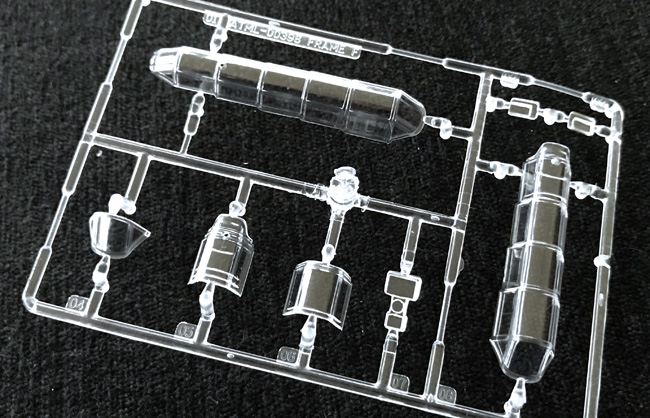
Clear parts
The canopy is helpfully split so front windscreen and rear sections are separate allowing you to pose your canopy open or closed. Crystal clear, blemish-free and well moulded without any distortion.
Instructions
The simple foldout instruction sheet is clear enough with references to paint colours; reference to exact colours and photos will help match your preferred paints to what’s needed. There are full colour painting/decal guides included for each version supplied.
Decals
Decals for two different “Kate” aircraft is included. Full stencil data is included and a clear diagram showing where each tiny item goes.
A – Nakajima B5N2 “Kate”, Imperial Japanese Navy carrier Shokaku, Pearl Harbor, December 7th, 1941
B – Nakajima B5N2 “Kate”, 553rd Kokutai, April-October, 1944
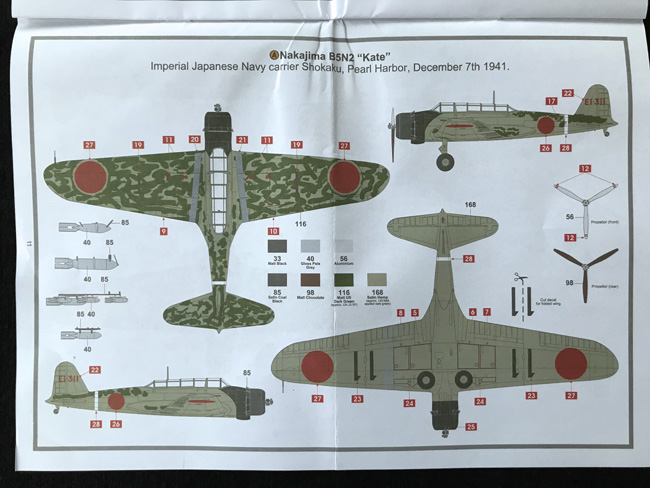
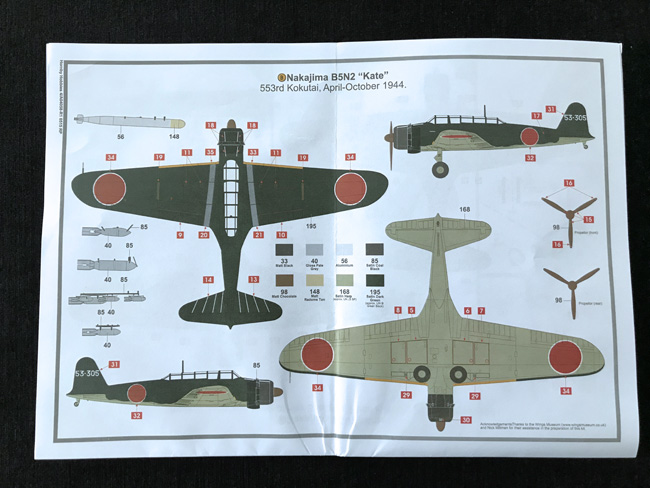
The decals are very well printed and look to be decent enough quality – let’s hope so.
Here’s my summary
This is a good package with impressive detail across the whole kit. fit of parts is impressive from a dry-run. This will be a great subject to add to your collection – that’s probably your growing collection of new-tool Airfix 1:72 and 1:48 kits. If you are interested in building this kit for SMN, just let me know by dropping me an e-mail to: geoff@scalemodellingnow.com
Geoff C.
SMN Quick summary Star rating out of 5
A little bit of background to the Nakajima B5N “Kate”
The Nakajima B5N (Japanese: 中島 B5N, Allied reporting name “Kate”) was the standard carrier torpedo bomber of the Imperial Japanese Navy (IJN) for much of World War II.
Although the B5N was substantially faster and more capable than its Allied counterparts, the American Douglas TBD Devastator monoplane (the U.S. Navy’s first all-metal, carrier-borne monoplane of any type with retracting gear), and the British Fairey Swordfish and Fairey Albacore torpedo biplanes, it was nearing obsolescence by 1941. Nevertheless, the B5N operated throughout the whole war, due to the delayed development of its successor, the B6N. In the early part of the Pacific War, flown by well-trained IJN aircrews and as part of well-coordinated attacks, the B5N achieved particular successes at the battles of Pearl Harbor, Coral Sea, Midway, and Santa Cruz Islands.
Primarily a carrier-based aircraft, it was also occasionally used as a land-based bomber. The B5N carried a crew of three: pilot, navigator/bombardier/observer, and radio operator/gunner.
